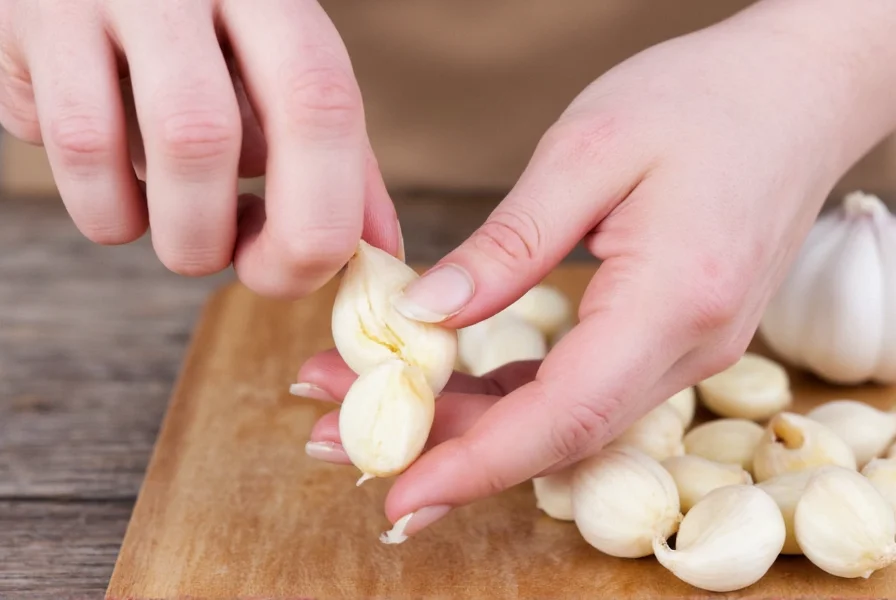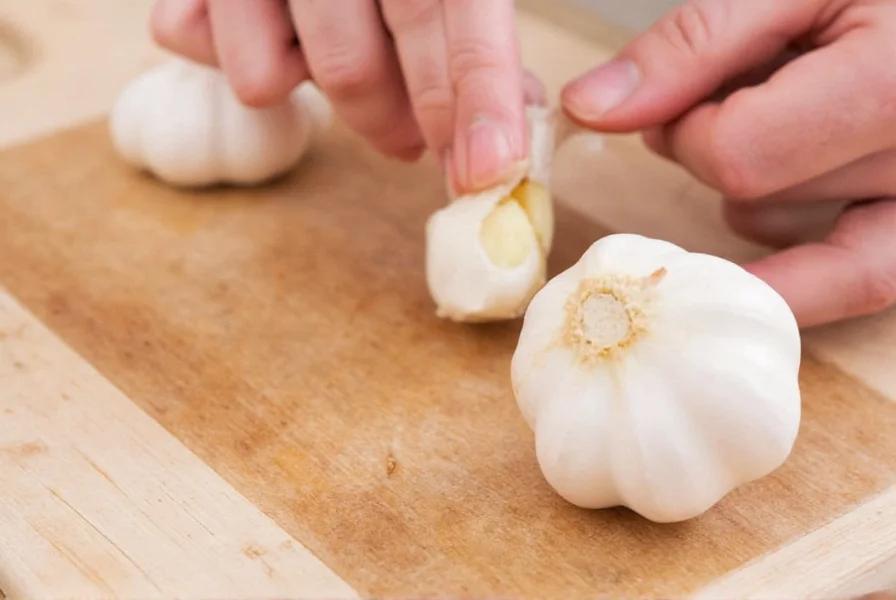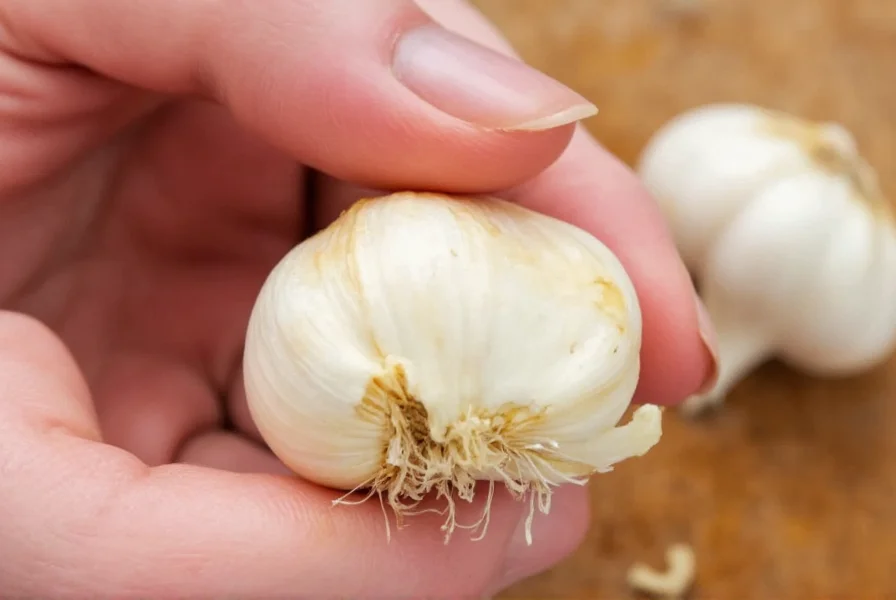Crushing garlic properly transforms both its texture and flavor profile, unlocking aromatic compounds that elevate dishes from ordinary to exceptional. Unlike chopping or slicing, crushing ruptures more garlic cells, releasing allicin and other flavor compounds that create that distinctive pungent aroma and rich taste essential to countless cuisines worldwide.
Why Crush Garlic Before Cooking?
Understanding the science behind crushing a garlic clove reveals why this technique matters. When garlic cells are damaged through crushing, the enzyme alliinase converts alliin into allicin—the compound responsible for garlic's characteristic flavor and aroma. The more thoroughly you crush, the more flavor compounds release, creating a more robust garlic presence in your dish.
Crushed garlic also distributes flavor more evenly than sliced or chopped garlic. The broken-down texture allows flavors to permeate oils and liquids more effectively, creating a more integrated taste throughout your recipe. Professional chefs often prefer crushing garlic versus mincing when they want garlic flavor to permeate rather than provide distinct pieces.
Essential Tools for Crushing Garlic
While specialized tools exist, the most accessible method for crushing garlic cloves requires only basic kitchen equipment. Here's a comparison of common approaches:
| Tool | Effectiveness | Pros | Cons |
|---|---|---|---|
| Chef's knife | ★★★★☆ | Immediately available, precise control, releases maximum flavor | Requires practice, creates uneven pieces |
| Garlic press | ★★★☆☆ | Fast, consistent results, minimal effort | Difficult to clean, can create bitter paste if over-pressed |
| Paring knife | ★★★☆☆ | Good for small quantities, precise | Less efficient for multiple cloves |
| Rocking knife motion | ★★★★☆ | Creates fine mince while crushing, excellent flavor release | Requires knife skills, more time-consuming |
Step-by-Step: The Knife Method (Best for Flavor Release)
Follow these steps for the best way to crush garlic without a press:
- Peel the garlic clove by removing the papery skin
- Place the clove on a stable cutting board
- Lay the flat side of a chef's knife over the clove
- Firmly press down with the heel of your hand
- Apply slight rocking motion to fully crush the clove
- Scrape the crushed garlic into a pile using the knife
- Minimize further if desired by rocking the knife blade
This technique works because the pressure ruptures more garlic cells than slicing alone. For optimal flavor development, let the crushed garlic rest for 5-10 minutes before cooking—this allows maximum allicin formation. Many home cooks don't realize that how to crush garlic clove with knife properly affects both flavor intensity and cooking time.

Avoiding Common Crushing Mistakes
Several pitfalls can diminish your garlic's flavor potential. Many cooks make the mistake of immediately cooking crushed garlic without allowing the flavor compounds to develop. Others press too hard with a garlic press, extracting bitter compounds from the garlic's core.
When using the knife method, don't rush the process. Apply steady pressure rather than hammering motions, which can send garlic flying across your counter. If you're working with multiple cloves, crush them one at a time for better control rather than trying to crush several simultaneously.
Another frequent error involves the timing of garlic addition to dishes. For sautéing, add crushed garlic to oil after it's warmed but before it smokes—typically about 30 seconds after heating begins. Adding garlic to excessively hot oil causes burning, which creates bitter flavors that overpower the dish.
What to Do With Crushed Garlic
Once properly crushed, your garlic is ready to transform your cooking. For most applications, incorporate crushed garlic into oil or butter first to mellow its raw bite while preserving flavor. In Mediterranean cooking, crushed garlic often forms the flavor foundation of dishes like aglio e olio or aioli.
When making sauces or soups, add crushed garlic early in the cooking process for deeper flavor integration. For finishing touches, some chefs prefer to add a small amount of raw crushed garlic at the end for a brighter, more pungent note. Understanding proper method for crushing garlic cloves gives you control over how garlic influences your final dish.
Advanced Crushing Techniques
For specific culinary applications, specialized crushing approaches yield superior results. When making aioli or mayonnaise, crushing garlic with a pinch of salt first creates a smooth paste that incorporates evenly. The salt acts as an abrasive, helping break down the garlic cells more thoroughly.
In French cooking, the technique of "fond de cuisine" often begins with crushed garlic in the mirepoix. For this application, chefs typically crush the garlic then mince it finely to distribute flavor throughout the base of sauces and stews.
When preparing garlic for marinades, consider crushing it then letting it steep in the acidic component (like vinegar or citrus juice) for several hours. This allows maximum flavor extraction while mellowing the raw bite—perfect for garlic crushing techniques for cooking that require bold but balanced flavor.

Storing Crushed Garlic
Freshly crushed garlic loses potency quickly as the volatile compounds dissipate. For best results, use crushed garlic immediately. If you must store it, place it in an airtight container with a small amount of olive oil in the refrigerator for up to 24 hours.
Never store crushed garlic in oil at room temperature, as this creates conditions favorable for botulism growth. Commercially prepared garlic-in-oil products contain preservatives that home preparations lack. Understanding proper storage is part of the complete how to crush garlic clove knowledge set.











 浙公网安备
33010002000092号
浙公网安备
33010002000092号 浙B2-20120091-4
浙B2-20120091-4